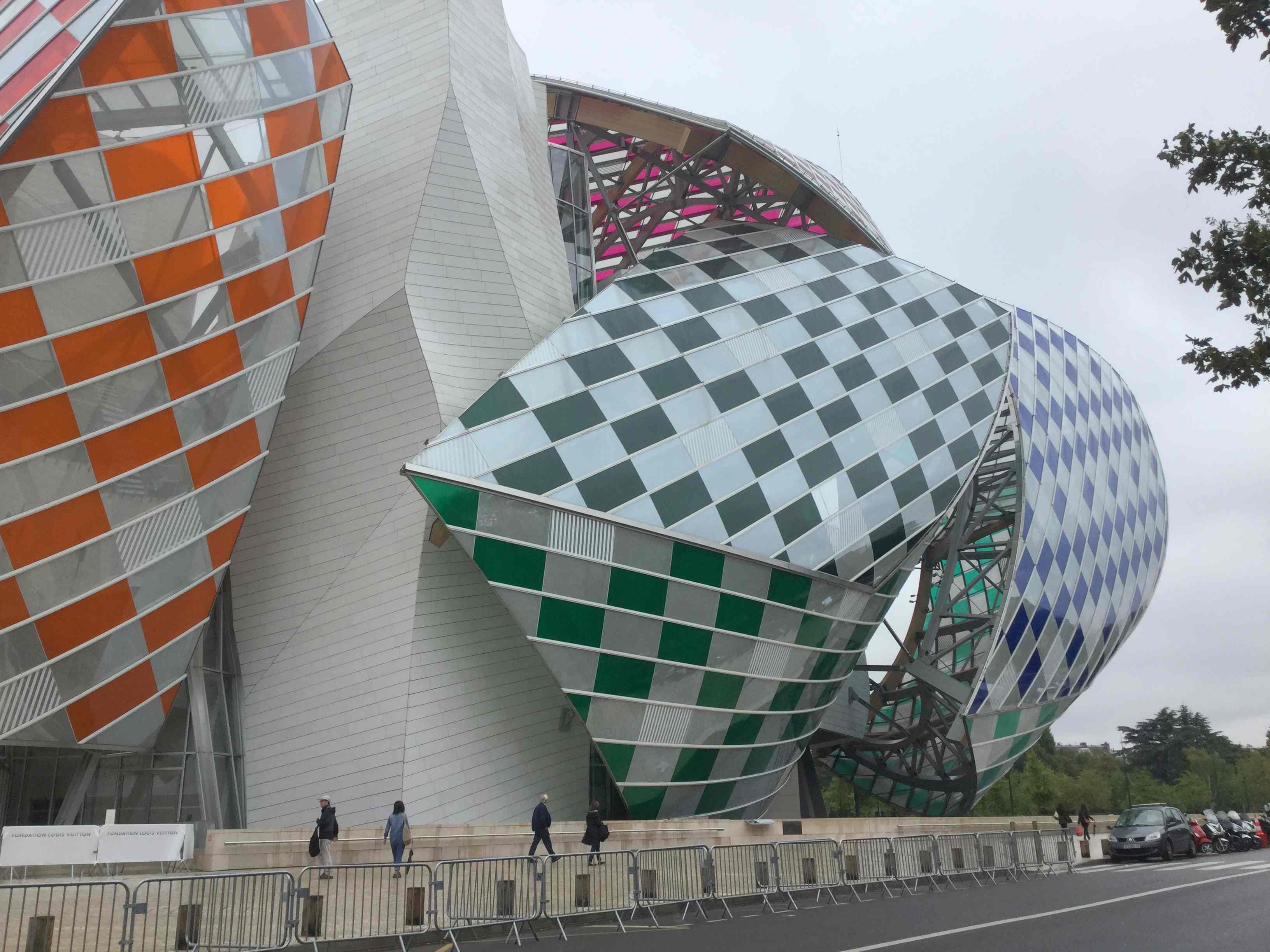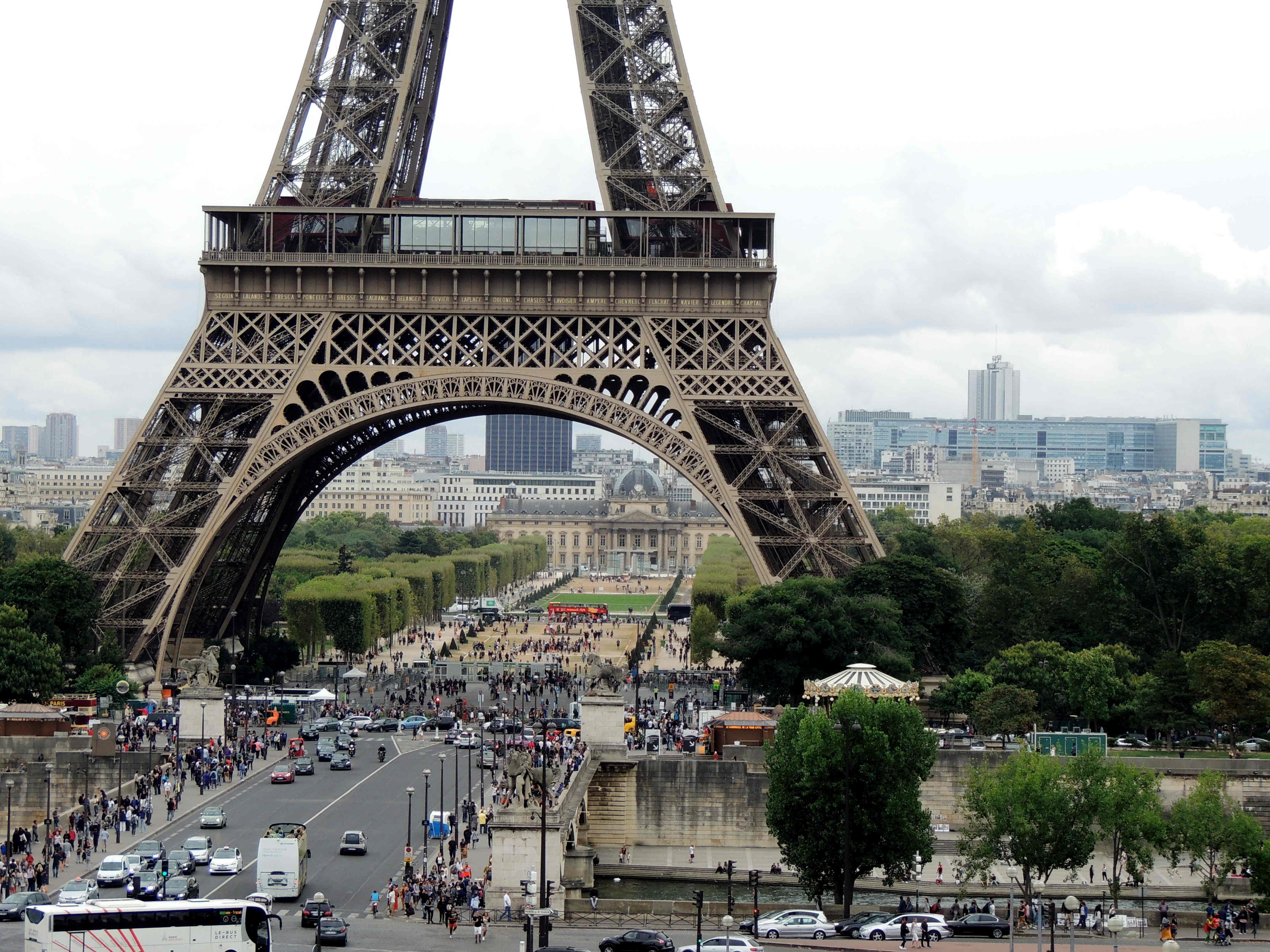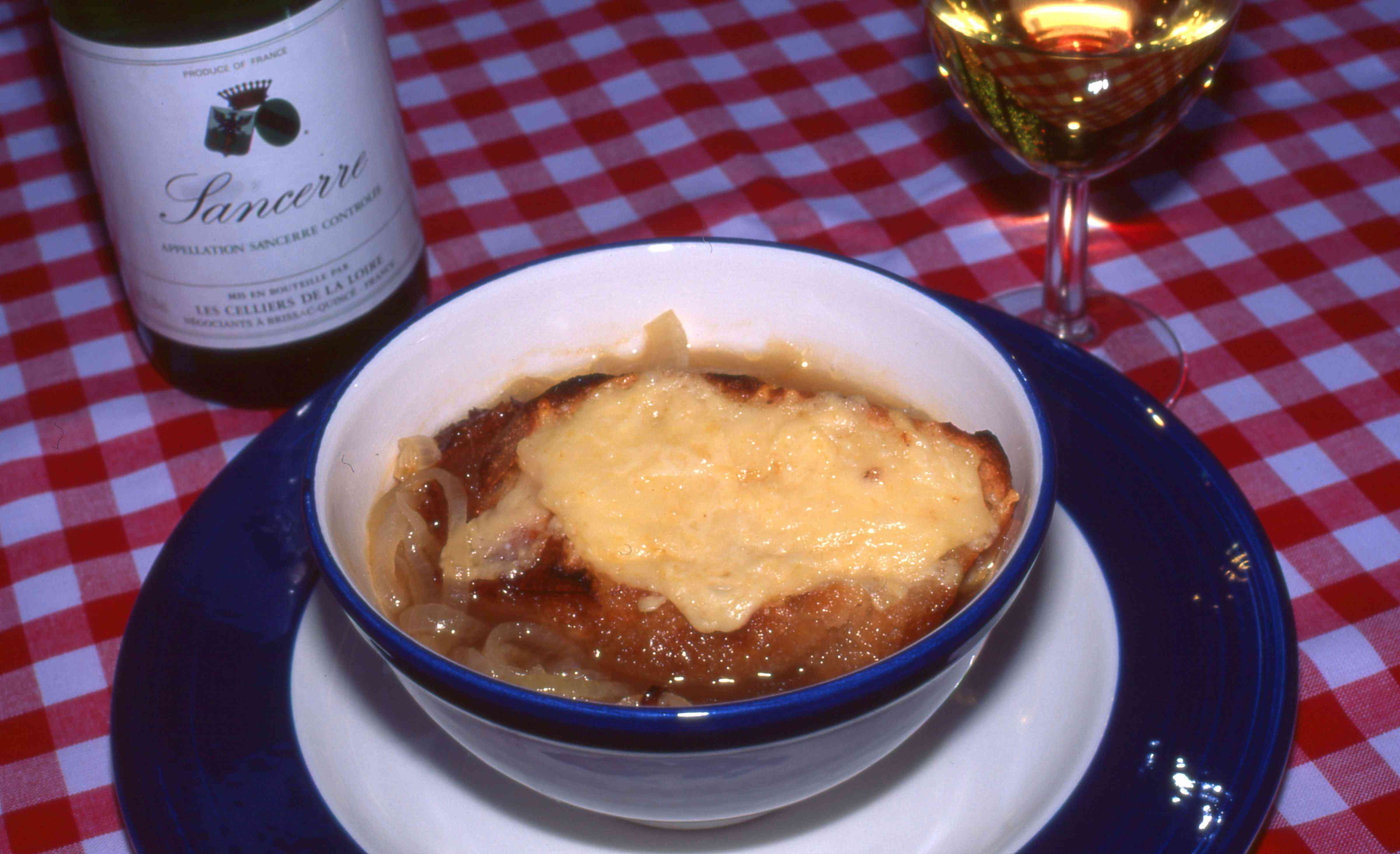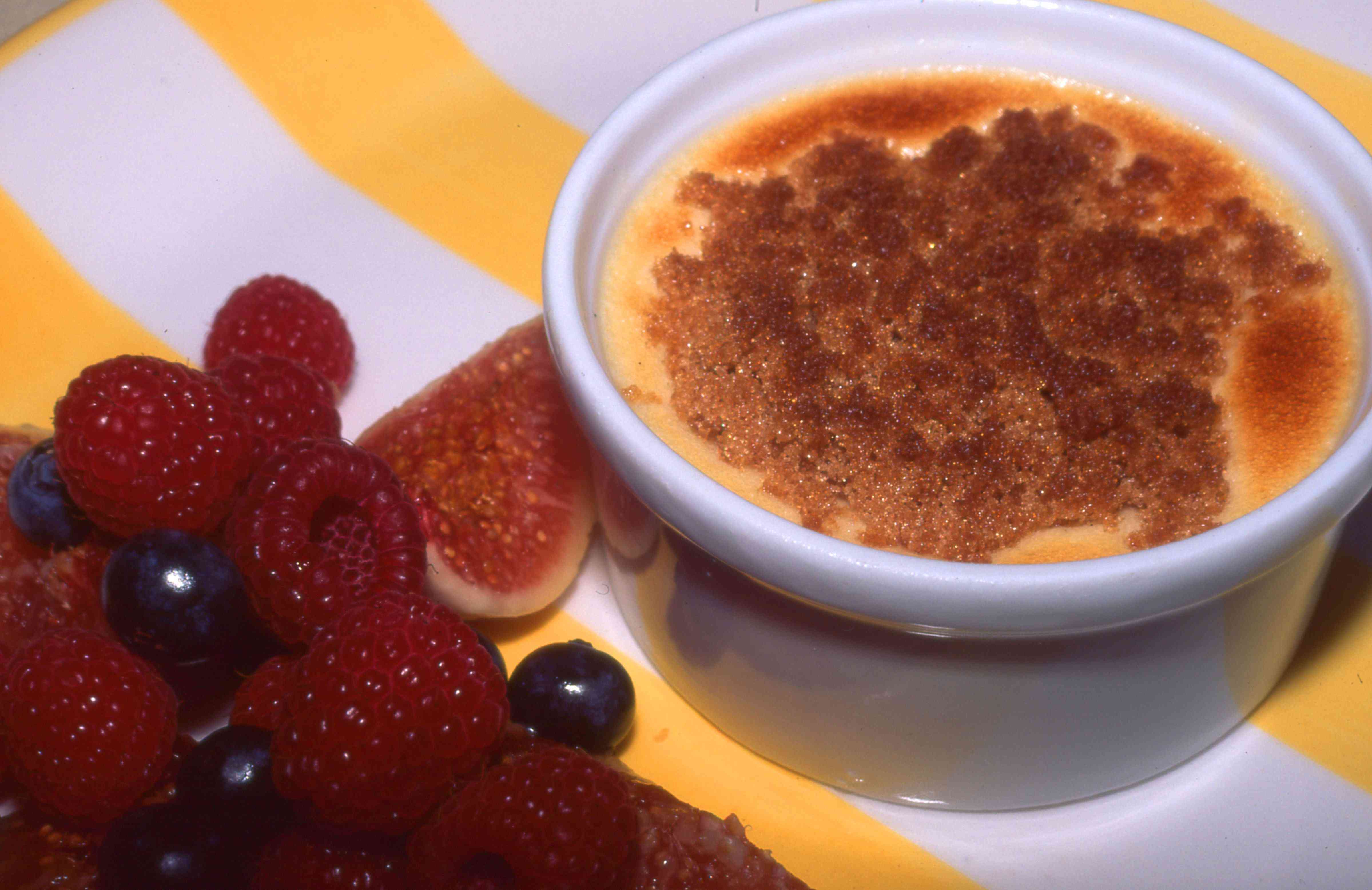Joël Robuchon passed away on August 6, 2018. He is acknowledged as one of the greatest chefs of all time. Plenty has been written about him and we won’t add any more here except to say that we were fortunate enough to visit his Paris restaurant, Jamin, in 1992. Part of the letter confirming our booking is reproduced below. It is still perhaps the best meal we have ever had, with a Japanese hint through the classical French dishes. We are reproducing one of his recipes in the article that follows – fish with smoked salmon and vegetables. It is a remarkable recipe that clearly illustrates his brilliance: fish studded with pieces of smoked salmon and a sauce made of butter and soy sauce. It is still such a modern concept and could stand proud today in any restaurant.
The rest of this post is from an article we wrote for Club Marine magazine in 1995.
The food shots date from that period and show their age after having been digitised, but hopefully they are still helpful.
The other photos are of Paris in more recent times and have been selected to demonstrate some of the delights and surprises of the city.
Some comments are included [in square brackets] to update the article where necessary.
The recipes we have included in this post – French onion soup, fish with smoked salmon and vegetables, and crème brûlée – would make a perfect dinner menu.
Paris Reflections – A 1990s perspective
Whether buying something in the street, dining at an elegant restaurant or at a simple, family-run bistro, eating out in Paris is normally a memorable experience. Although prices are often higher than in comparable eateries in Australia, the ambience of many restaurants and the incomparable beauty of the city combine to produce a quality of experience not found anywhere else. As in any major city, there is a huge diversity of types of establishments. Prices and quality vary enormously. [The Australian dollar is stronger in 2018 making prices much more reasonable compared to the early 1990s.]
The streets, boulevards and parks and gardens give the first impression of what eating is like in Paris. Here you will find chestnut sellers, stalls selling exotic crepes, kiosks with warm croissants and long baguettes filled with wonderful cheese and ham, and neat arrangements of stylish tables and chairs waiting for coffee drinkers or luncheon crowds. You will also find wonderful window displays. When in Paris, make sure you visit the famous gourmet food shop Fauchon, located near the Madeleine church. The window displays of cakes, tarts, pies, decorated fish, hams and other meats will make your mouth water. Inside, there is an excellent range of produce of exceptional quality flown in from all parts of the world. There is also a huge range of packaged gourmet products such as chocolates, tea and coffee, jams and preserves.
Paris has about 12 000 cafes, many set on to the footpath. [Some sources indicate that the number of cafes in Paris and France has been on the decline in recent decades.] The prices at the more fashionable cafes with floor to ceiling windows lining the Champs Elysees can be rather steep, but spending some time there over a coffee or a glass of wine and watching the world go by is an experience not to be missed. Sharing a coffee with friends at a cafe is an important aspect of the French culture. Drinks will cost less if you are prepared to stand at the bar. Snacks commonly available include the Croque Monsieur (a variation on grilled cheese and ham on toast), filled baguettes, crudités (raw vegetables served with a vinaigrette) and salade niçoise. If you are after a more interesting range of wines, seek out a wine bar, where simple snacks are also provided. A Salon de Thé is the place to go for a serve of delicious cake or tart.
In years gone by, many Parisians ate regularly at simple, family-run bistros, as apartments often had little in the way of cooking facilities. This style of bistro continues to thrive. Typically with simple decor and paper tablecloths, they usually offer hearty food at reasonable prices. They generally offer a fixed price menu which will be excellent value for money and greatly appreciated by the locals and tourists. The food is generally very good and the ambience very Parisian. Dishes might include pâté and terrines, chicken cooked in vinegar, rabbit in mustard sauce, or just steak, pommes frites and salads. Desserts may include chocolate mousse, crème caramel or crème brûlée or perhaps tarte tatin. A good example of this style of restaurant is Chartier, in Rue Fauborg-Montmartre. Apparently it has hardly changed since it opened in 1896. The vast dimensions of the room, with its huge mirrors, high ceilings, large wall clock and wood panelling, almost create an impression of a grand old railway station. It is generally packed but very efficiently run. You may find yourself sitting next to a stranger – perhaps a regular client, someone from the French countryside, or a visitor from another country – and it is normal to strike up a conversation, if you can speak the same language.
Many of the traditional grand restaurants for which Paris is so famous date from the late 1800s. They reached their peak in popularity in 1900, at the height of the “belle époque“, when the Universal Exhibition was held in Paris. In that year, the first edition of the famous Guide Michelin was published. Some of Paris’s most famous restaurants, such as Maxim’s and La Tour d’Argent date from this period. One of the most spectacular belle époque interiors is in Le Train Bleu, established inside the Gare de Lyon. Another famous restaurant dating from the 1880s is Au Pied de Cochon, located at Les Halles. It is always busy and is open 24 hours a day; in fact its doors have not closed once since 1946. It has a bright interior with colourful murals and chandeliers. Specialties include shellfish platters, onion soup and pigs’ trotters.
If you choose to go to one of Paris’s top restaurants, expect to pay considerably more than in the best Australian establishments. At a three star Parisian restaurant, you can easily pay $250 per person for the food alone [written in 1995]; wine will be extra and not cheap! One of the most famous is Robuchon, named after its chef, Joël Robuchon. It is claimed by many to be the best restaurant in the world. To eat here, you will probably have to book months in advance. The 35 staff at Robuchon look after only 45 diners.
To eat well in Paris, or in the rest of France, it is advisable to have a good guide to restaurants. The Michelin Red Guide is the best known guide book for hotels and restaurants in France. Although the listed restaurants will all offer food of an acceptable standard, the Guide tends not to cover cheaper establishments or ethnic ones. Michelin allocates either one, two or three stars to its top-rating restaurants. Michelin stars are eagerly sought by ambitious chefs. The guide only gives scanty indication of the type of food and decor. The other main guide, the Gault Millau, provides more detailed descriptions of each restaurant, covering the food, the chef and the decor. It is somewhat more adventurous in the sorts of places it includes. Gault Millau gives rankings out of 20 to its restaurants, with some achieving 19.5. Another guide, which is a favourite of ours, is the Food Lover’s Guide to Paris by Patricia Wells. [Still a fascinating read in 2018 if you can obtain a copy.] In it she includes a wide range of restaurants as well as coffee shops, cheese suppliers, chocolate shops, bakeries and so on. There is enough to keep any food lover going for months. Based in Paris for many years, Patricia Wells has developed a formidable understanding of the Parisian eating scene. As well as being knowledgable about food, she is also a wonderful writer. (She has also written a guide for the whole of France.) [Again, still a fascinating read in 2018 if you can obtain a copy.]
Paris itself does not have its own identifiable cuisine. However, the advantage of Paris is that all the French regional cooking influences are catered for. Thus restaurants may specialise in the cuisine of Provence or Alsace or Brittany or Lyon. French wine, of course, is available in abundance but top quality Burgundy and Bordeaux wines are still very expensive. In addition to restuarants serving “French” food, there are increasing numbers of ethnic restaurants in Paris. Different nationalities tend to congregate in their own areas. South-east Asian cuisine is not so well represented as in Australia, but there is an excellent range of North African establishments. Moroccan and Algerian restaurants are worth seeking out as they provide interesting dishes such as couscous and tagines at reasonable prices.
Three recipes, including one by Joël Robuchon
Two of the recipes included below – French onion soup and crème brûlée – are just so Parisian. The Robuchon recipe – fish with smoked salmon and vegetables – is a marvellous example of modern fusion cuisine [even in 2018.] . Together all three dishes would make for a perfect dinner party.
French Onion Soup (Soupe à l’oignon)
There are numerous recipes for French Onion soup, however, there are certain common basic features. The basic recipe is to cook the onions first, place them in soup bowls, cover with stock then top with grilled cheese on bread. Depending on the quality of the ingredients and the care taken, the result can range from satisfactory to wonderful. Thus it is worth the time to cook the onions slowly so they are quite soft and caramelised to a medium brown. Prepare a tasty, fairly clear stock. Beef or chicken can be used or a mixture of the two, perhaps with some veal stock to give it a more gelatinous texture. (Check good recipe books for making good stock; don’t attempt to make the soup from stock cubes or other substitutes). Finally, purchase some Gruyère style cheese: use imported cheese if necessary but you might find a suitable Australian version from a good delicatessen or cheese seller. The recipe given here is largely based on the recipe from Au Pied De Cochon as given in Patricia Wells “Bistro Cooking” (Workman Publishing, 1989).
Ingredients (for six)
- 1 kg white onions, finely sliced
- 1½ cups dry white wine
- 2 tbsp butter
- 1½ tbsp cognac or brandy (optional)
- 1½ litres good chicken or beef stock
- 6 slices of crusty baguette or equivalent
- 2 cups (175 g) Gruyère-style cheese, grated
First caramelise the onions. On top of the stove, melt the butter in a frying pan, add the onions and the wine and cook slowly for one or two hours, stirring occasionally. Alternatively, use some of the butter to coat the surface of a suitable baking dish or flat casserole, add the onions, then the wine and top with the remaining butter. Cook in the oven at 150oC to 180oC for one to two hours, again stirring occasionally. Cook until the onions are soft and medium brown in colour, with little liquid remaining. They should have a sweet flavour. They can be reheated when ready to serve.
To serve, first bring the stock to a boil and turn on the griller. Share the onions between six deep soup bowls. (At this stage you could add a teaspoon of good cognac or brandy into each bowl.) Cover with some stock. To finish off you may, if the bowls are heat proof, place a slice of bread in each bowl, top with grated cheese then grill for two or three minutes until the cheese has melted and browned. Alternatively, grill the cheese on the bread separately and add to the soup. In either case push the bread a little way into the stock. Serve immediately. Serves 6.
Degree of difficulty: 3/5 (moderately difficult).
Fish with smoked salmon and vegetables
This recipe is based on one published in Australian Gourmet in 1985. The recipe is by Joël Robuchon as written up by Patricia Wells. It is a most unlikely combination of ingredients but the result is exceptional. It displays the creativity of one of the world’s leading chefs. The interest in the recipe comes from two main sources: the smoked salmon which is used to stud the fish and from the sauce based on soy and butter. Depending on the type of fish used, it may be difficult to use up all the smoked salmon, but the more you use the better the result. Be careful not to add any extra salt as the sauce is salty enough. Make sure you use unsalted butter. The original recipe called for cod or ling but trevally and blue eye also work well. The fish must be very fresh. Julienning vegetables (meaning they are cut into long strips as thin as a matchstick) can be very time consuming but give a more sophisticated looking result. However, if you choose to use thicker slices the vegetables need to be cooked slightly longer.
Ingredients (for six)
- 1200 g fresh white fish in 6 fillets
- 150 g to 200 g smoked salmon cut into thin strips
- 6 large mushrooms, julienned
- juice of 1 lemon
- 1 red capsicum, julienned
- 1 green capsicum, julienned
- 1 yellow capsicum, julienned
- 2 small zucchini, julienned
- ¾ cup soy sauce
- 4 tsps tomato puree or sauce
- 5 drops Tabasco sauce
- 8 tbsps unsalted butter
- ½ tsp red wine vinegar
- 1/3 cup quality olive oil
- freshly ground black pepper
- ½ cup freshly chopped parsley
Remove the skin and bones from the fish fillets. Pierce the fish in 10 or so places and fill with some smoked salmon. Toss mushrooms in lemon juice. Blanch the mushrooms, capsicum and zucchini by tossing in boiling water for 1 to 2 minutes. Drain well. The vegetables should be fairly crisp.
Prepare the sauce by combining the soy sauce, tomato sauce and Tabasco in a small saucepan. Bring to the boil, then whisk in the vinegar and half the butter.
Heat the oil in a large frying pan. Cook the fish over high heat for two minutes or so each side. Do not over cook: the fish should barely flake with a fork. Melt the remaining butter in another saucepan and toss the vegetables until warmed through.
Place some vegetables on each plate. Top with a fillet of fish. Pour over sauce and garnish with parsley. Serve immediately. Serves 6
Degree of difficulty: 3/5 (moderately difficult).
Crème Brûlée
This crème brûlée is based on a recipe from American Gourmet magazine. It is one that does not set firmly: it is cooled in its own receptacle and will spoon out like a thick cream or custard. The grilled sugar topping breaks like a volcanic crust. The recipe involves making a custard from the cream and eggs. A problem is that the egg yolks can cook and curdle or scramble if the mixture reaches too high a temperature. To be on the safe side you can use a double boiler (or a bowl placed over a saucepan half filled with simmering water). Otherwise use a thick bottomed saucepan and very low heat but taking care to stir continuously and not to burn or overcook. It is worth the expense to use vanilla bean: the cream will be speckled with its black seeds. (The salvaged scraped out bean can be washed, dried and stored covered in caster sugar to produce vanilla sugar.) The crème can be made early in the day and then grilled just before serving. To keep the crème cool when served, the pots may be placed in another container containing crushed ice or ice-blocks and water before grilling. Small pots of crème brûlée are an excellent accompaniment to fresh fruit and berries. Here we have used figs, raspberries and blueberries. Makes 8 small or 4 large serves.
Ingredients
For 8 x 130ml or 4 x 250ml pots/ramekins.
- 600 ml heavy (45% or more fat) cream
- ½ vanilla bean or several drops vanilla essence
- 5 egg yolks from 67 g eggs (free range if possible)
- 4 tbsps white sugar
- ½ cup light brown sugar, sifted
Slit along the length of the piece of vanilla bean and add it (or the essence) and the cream to the double boiler or saucepan. Bring to a bare simmer and allow to sit for a few minutes. In a bowl beat the egg yolks and white sugar until light in texture and colour. Remove the vanilla bean and scrape the seeds back into the cream. Pour a small amount of the warm cream into the egg mixture; a small amount does not increase the temperature of the eggs too quickly. Combine then stir in the rest of the cream. Return all of this mixture to the double boiler (or heavy saucepan). Over boiling water (or low heat if using the saucepan) gradually heat the mixture, stirring continuously. Use a whisk and allow ten minutes or so. Stop once the custard coats the back of a spoon – draw a line across the back of the spoon with a finger and if the line holds, the custard is cooked. But make sure the mixture has noticeably thickened. (The mixture can be strained if some lumps have formed.) Pour the mixture into the chosen pots/ramekins and refrigerate for three or more hours.
Before serving set the griller to high. If using, prepare a tray with iced water and ice cubes if desired and place pots in. Sift the brown sugar separately then spoon over the cream to a thickness of 2 or 3 mm: make sure there is not too much sugar, otherwise it will result in a very sweet dessert. Place under the griller for a minute or so until the top only just caramelises or sets. Don’t allow the sugar to get too dark as it will taste bitter. Watch very carefully as the sugar can burn and even catch on fire. Serve immediately. Use a fruit accompaniment if desired. (Serves 4 or 8.)
Degree of difficulty: 3/5 (moderately difficult).















